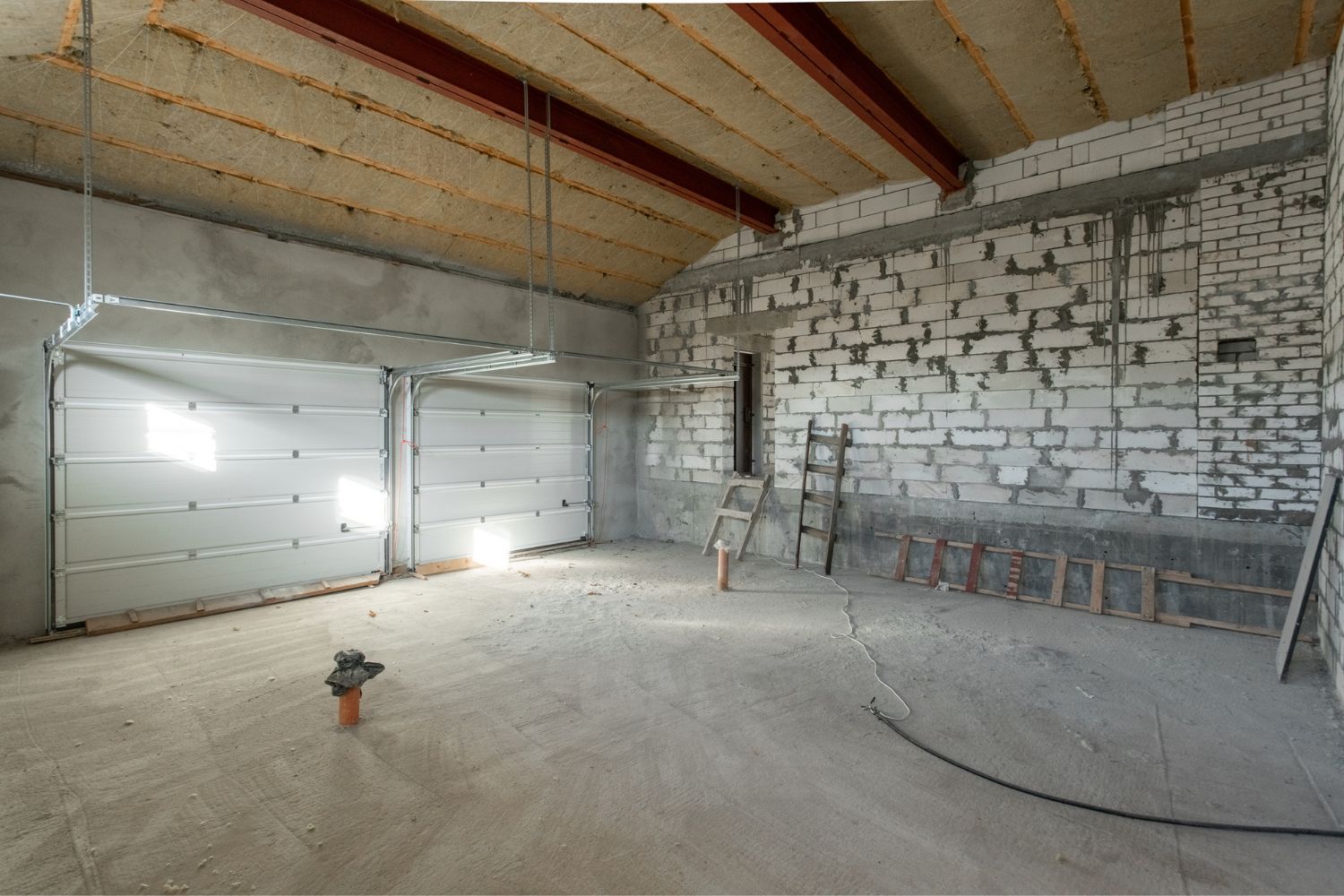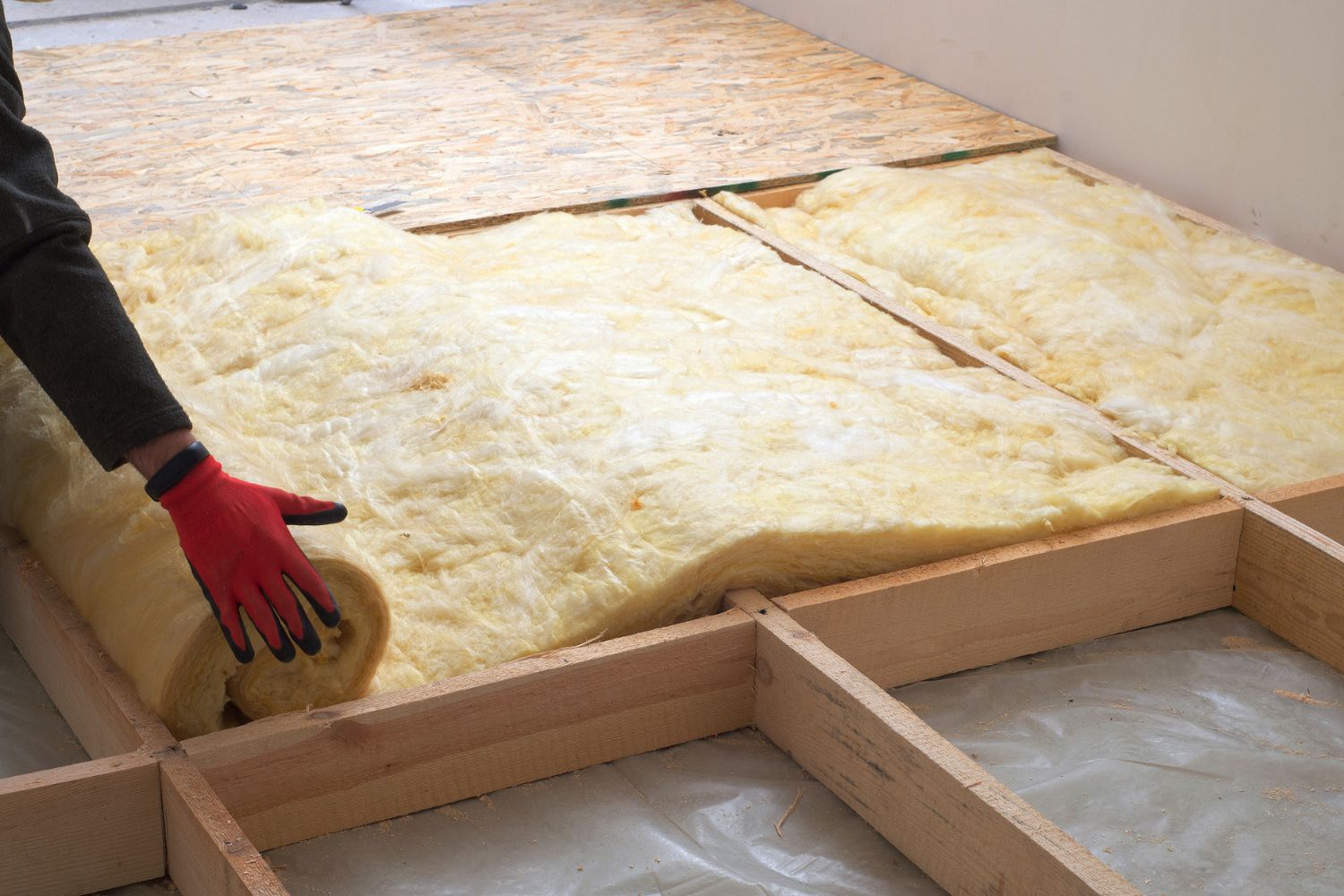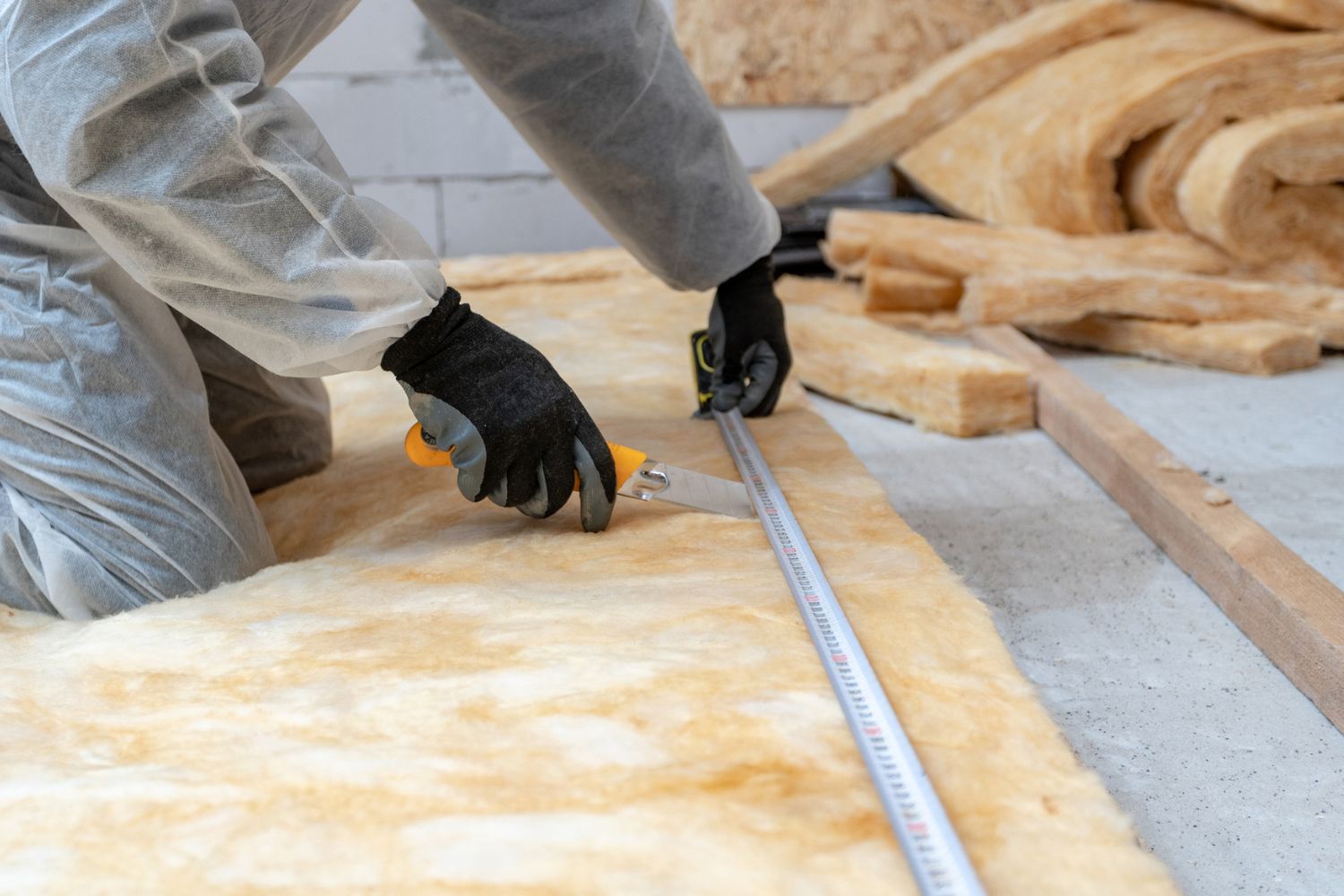How Much Does It Cost to Insulate a Garage?
Hello, my friend, hello again; today we come together to talk about How Much Does It Cost to Insulate a Garage? and hope the blog can help you.
Insulating a garage can boost a home’s comfort level, usable space, and value. The average cost to insulate garage space is $4,500, falling within a typical range of $2,000 to $6,000.
- Typical Range: $2,000 to $6,000
- National Average: $4,500
Homeowners choose to insulate their garages for a number of reasons. One of the most common reasons is to reduce the energy required to heat and cool their home. Others do it to reduce garage noise invading other areas of the home, while some homeowners add insulation to increase their home’s value. Finally, many homeowners consider garage insulation as a way to gain more usable space in their home. Insulation costs may seem high, but they can be worth it if the homeowner gains additional usable space.
Whatever the reason, insulating a garage is an investment. The national average cost to insulate garage space is $4,500, though some projects can be as affordable as $2,000. In larger spaces or more complex projects, homeowners may spend as much as $6,000 to insulate their garages. This guide will cover how to estimate a garage insulation job, the benefits of insulating a garage, and ways to save money on a garage insulation project.
Want to insulate your garage?
An insulation pro can help. Get free, no-commitment project estimates from insulation services near you.
+
Factors in Calculating the Cost to Insulate a Garage
Whether it’s a renovation project or new construction, insulating a garage can be a beneficial home improvement project. But how much does it cost to insulate garage walls, doors, and ceilings? A variety of factors go into how much the project will cost, including the following.

Garage Size
Garage size is one of the most influential factors when homeowners are estimating an insulation installation. Generally speaking, the more space a garage has, the more insulation it will likely need. For example, the cost to insulate 400-square-foot garage spaces will almost always be less expensive than the cost to insulate 600-square-foot spaces.
On the lower end, a single-car garage measuring approximately 240 square feet costs between $572 and $6,600, depending on factors such as the insulation type and material.
As to be expected, the price goes up significantly for a garage that holds more vehicles. The cost to insulate two-car garages ranges from $780 to $9,000, while the cost to insulate three-car garages typically runs between $1,300 and $15,000.
Insulation Type
There are five main types of insulation that homeowners have to choose from. Many homeowners choose to mix and match them, as each one tends to fit better in different spaces. But with unique price points, a homeowner can end up with a wide potential cost range.
Batt insulation is the cheapest available option. It costs anywhere from $0.65 to $2 per square foot and is most commonly used in walls and ceilings. Blown-in insulation is another affordable option costing between $1.65 and $3.80 per square foot; it’s usually used to fit into empty cavities found behind drywall. Foam board ranges from $2.40 to $3.75 per square foot and is most commonly used in exterior spaces. Spray foam is a type of insulation that can be used virtually anywhere; the cost of spray foam insulation in garages is between $3.15 and $7.50 per square foot. Finally, the most expensive option is rigid board, which costs $5.75 to $15 per square foot and is a great insulation choice for soundproofing purposes.
Insulation Material
There are nine standard materials used for insulation, with many being used only for specific purposes. Each has its unique pros and cons, so homeowners will want to do their research before deciding on the best insulation for garage installations.
On the cheaper end are fiberglass, blue jean, cellulose, and sheep wool. These options vary in price but can be purchased for $0.40 to $2.80 per square foot. In the mid-range are rockwool, polyisocyanurate, and wood fiber. These options range from $1.40 to $6.75 per square foot. Finally, the most expensive options are cork and polystyrene, which tend to cost between $1 and $15 per square foot.
Insulation Location
The location of the insulation installation heavily influences price. Accessing some areas requires more time and effort, resulting in more complex job scopes and additional labor hours.
For example, the cost to insulate garage doors is the least expensive, since they’re easily accessible. Homeowners can expect to pay between $500 and $700. With a typical price range of $600 to $900, floors don’t cost much more to insulate. The cost to insulate garage ceiling space is anywhere from $260 to $3,000. When estimating the cost to insulate garage attic space or a roof, homeowners can expect to pay between $1,600 and $3,000. Finally, the cost to insulate garage walls tends to be the highest, costing anywhere from $780 to $9,000.
These costs are assuming an average two-car garage, with approximately a 400- to 600-square-foot surface area. Each location’s price range is also influenced by insulation type and material.
Insulation R-Value
R-value is a term likely unfamiliar to many homeowners, but it is very important to consider it when installing insulation. It measures how resistant a material is to transferring warmth. This means that materials with higher R-values hold heat more effectively.
Different insulation types offer different R-values. Batt insulation has an R-value range of 2.2 to 4.5, while blown-in varies from 2.5 to 4.3. Rigid board is 3.6 to 4.2, foam board is 3.6 to 6.5, and spray foam is 3.8 to 7.
Generally speaking, the higher the R-value, the more expensive the insulation type. This isn’t always the case, so homeowners will want to balance their budget against a higher R-value to get the most impact out of their investment. This is why figuring out how much insulation a project requires is an important step.
Labor
The final factor involved in the cost of insulation is labor. This, once again, is largely dependent on type and material. Labor costs tend to range from $300 to $4,000 for garage insulation. For additional clarification, homeowners can break down labor costs by insulation type.
- Batt: $0.25 to $0.80 per square foot
- Blown-in: $1.15 to $1.30 per square foot
- Foam board: $1.40 to $2.50 per square foot
- Spray foam: $50 to $100 per hour
- Rigid board: $1.50 to $2.50 per square foot

Additional Costs and Considerations
In some garage insulation installations, a homeowner may come across a few additional costs outside the normal job scope. While higher costs are never ideal, some scenarios offer additional value. Homeowners will want to keep the following considerations in mind when budgeting for a garage insulation project.
Energy Audit
Although an energy audit is not necessary, it can help pinpoint trouble areas in a garage that may be wasting energy. This can save on energy costs, helping to defray the cost of installation while ensuring a garage’s insulation can stand up to the temperature monitoring needs of the space.
An energy audit before a garage insulation project is another cost but can be worth the investment if it helps save money in the long run. Homeowners can expect to pay between $145 and $420 for an energy audit. This cost would cover an evaluation of both the garage and living spaces of a home, so it may reveal additional issues that may have a bigger impact on cutting energy costs once addressed.
Save on energy costs by insulating your garage
Let an insulation pro help. Get free, no-commitment project estimates from insulation services near you.
+
Drywall Installation
The average cost to insulate and drywall garage space for two cars is between $1,680 and $10,200. Drywall isn’t required in a garage (except for walls between the garage and living area of a home), but it does offer some nice benefits.
One benefit is that drywall is highly resistant to fire. With garages having multiple potential fire hazards, like power tools and vehicles, it’s beneficial to have a fire-resistant material in the space. Drywall also gives a more finished look, which can be appealing if a homeowner uses their insulated garage as an additional living space. Additionally, drywall can increase the structural integrity of a home while adding an extra layer of insulation and soundproofing.
Soundproofing
Soundproofing a garage reduces noise distractions from the outside and inside the home. This can be very beneficial for someone who works out of their garage or retreats to the space for peace and quiet.
Soundproofing a garage may allow for the opposite as well. A homeowner can be as loud as they want in a soundproofed garage. Whether they’re operating power tools or holding band practice, they won’t disturb their neighbors and family members.
And as an added bonus, soundproofing can improve the sound quality inside a garage. While insulation has many sound-absorbing qualities, a homeowner who is serious about blocking out noise may want to budget for soundproofing services during their garage wall insulation project. Soundproofing costs between $230 and $450.
Mold Remediation
A musty, damp smell in a garage can be a sign of mold. A homeowner will want to look for black, white, or gray patches of mold on the ceiling or walls if a garage has been exposed to excessive moisture after a recent flood or leak. Powdery-looking paint is another potential sign of a mold issue inside a garage.
Mold can cause watery eyes, a runny nose, itching, wheezing, and headaches. It’s always best to have mold taken care of as soon as possible. Costs vary based on the space and the mold issue’s seriousness, but homeowners can expect to pay between $1,500 and $3,500 for mold remediation as they prepare for a garage insulation project.
Weatherstripping
Weatherstripping offers protection against air that leaks around doors and windows. In a garage, weatherstripping around the garage door can be quite helpful in maintaining a comfortable temperature inside the space. The best insulated garage doors often include additional weatherstripping material to ensure an air-tight seal when closed.
The cost of weatherstripping will depend on how much material and time is needed to complete the job. The more windows and movable components a garage has, the more expensive it will be to weatherstrip the space. But generally, homeowners can expect to pay between $130 and $400 for weatherstripping their garage.
Cost to Insulate Garage by Insulation Type
There are several different types of insulation on the market, and all offer different benefits, disadvantages, and price ranges. Homeowners should consider their budget and goals when choosing an insulation type for their garage.
Batt
Batt insulation can be made out of many different materials, though fiberglass is the most common. It’s easy to work with and relatively inexpensive. Batt insulation is best for DIY projects and unfinished garage ceilings, floors, and walls. While this type of insulation can be installed in a garage with existing drywall, there may need to be repairs after the installation, and that can increase the project cost.
Whether choosing fiberglass batt insulation to do a quick DIY project or to save costs on a professional installation, homeowners can expect to pay between $0.65 and $2.00 per square foot.
Blown-In
Blown-in insulation is a good choice for attic spaces above a garage and drywall walls. Most blown-in insulation is made from fiberglass and cellulose. Both materials are ideal for filling cavities, so blown-in is not recommended for walls without drywall. If batt insulation isn’t an option due to the risk of drywall repair, blown-in can be considered. It should also be noted that blown-in insulation is more efficient than fiberglass batting and can reduce condensation, limiting the risk for mold.
When homeowners are estimating a garage ceiling insulation, blown-in insulation costs can be affordable, with a price range between $1.65 and $3.80 per square foot.
Foam Board
For those who want to insulate their garage but don’t want the look or additional cost of drywall, foam board insulation is an excellent option. Many garage insulation kits include foam board, since it’s an easy type of insulation for a DIY project. However, not all municipalities allow foam boards under local building codes. A homeowner will also want to check that their foam board insulation has been flame-tested for safety.
Foam board is also a great choice for metal garage insulation during exterior renovations or for garages that are fully insulated on the interior but still need a bit more insulation for comfort or soundproofing. When choosing foam board, homeowners can expect to pay between $2.40 and $3.75.
Spray Foam
Is spray foam insulation worth it? In many cases, yes; spray foam insulation is ideal for nearly any space within a garage, though it works best in open cavities. When estimating the cost to spray foam insulate garage walls, homeowners will want to consider access. In most scenarios, a small hole is drilled into the exterior siding of a garage. This doesn’t damage the garage, but it can add to labor costs. The cost of insulating an open wall is much lower.
Another factor to consider is the type of spray foam insulation. Open-cell spray foam is more affordable, but closed-cell spray foam is more energy efficient. The cost to spray insulate garage walls or other spaces is between $3.15 and $7.50 a square foot.
Rigid Board
Rigid board can be an expensive material for a garage insulation installation project. It’s typically made of cork or wood, though there are foam options available. Rigid board is not a common insulation material for garages since it’s not water-resistant; it’s recommended only in a completely finished and waterproofed garage. It’s ideal for insulating sheathing or adding insulation to attic spaces and can also be used on the back of a garage door.
Some homeowners may choose rigid board insulation because it’s a good soundproofing material. It may not make sense to use it in a full garage insulation project, but rigid board is great for shared walls between garages and living spaces. Given its price range between $5.75 and $15.00 per square foot, homeowners may want to consider other materials before choosing rigid board.
Reflective
Reflective insulation is a versatile material. It’s relatively safe to work with since it’s dust-proof, and it’s easy to install compared to other material types. Reflective insulation doesn’t collect moisture, making it ideal for hot and humid climates. It’s also great for ceilings, floors, and unfinished walls. Because reflective insulation works by blocking heat from entering a garage in the first place, it is perfect for garage attics, where it’s installed between the beams, joists, and rafters.
Another advantage of reflective insulation is that it’s ideal for DIY installation. Homeowners can expect to pay between $700 and $2,900 for reflective insulation for a DIY project, with professional installation costing an additional $575 to $750.

Benefits of Garage Insulation
Insulating a garage offers several different benefits, many of which help absorb the cost of garage installation. Homeowners can see how insulation can benefit their home, its inhabitants, and the environment through the following benefits.
Energy Efficiency
One of the best ways to reduce energy consumption in a garage is to insulate the ceiling, door, floor, and walls. Insulation helps to retain warm air during the colder months and keeps the space cooler during the warmer months. An uninsulated attached garage can also cause heat loss from a home during the winter and make it harder to cool living spaces during the summer, resulting in higher energy costs.
Aside from rigid panel insulation, fiberglass batt insulation is the most commonly used option because it’s eco-friendly, easy to install, and inexpensive. Whether homeowners are using fiberglass insulation or foam board insulation, it’s important to check the R-value of the material to determine its energy efficiency.
For exterior garage walls, homeowners will want to aim for an R-value of R-13 or R-15. For an attached garage, an insulation R-value of 12 to 16 is ideal. An R-value of 13 to 30 is recommended for a garage ceiling, depending on the thickness of the joists and the climate.
Reduced Energy Bills
An insulated garage is more energy efficient than an uninsulated garage, but will it save enough for a homeowner to notice a drastic difference in their energy bills?
Yes and no. If a homeowner decides to insulate only the garage door, they likely won’t see a noticeable dent in their energy bills. That’s why the best approach is to insulate the whole garage, especially walls directly attached to the rest of the house.
In most cases, fiberglass insulation can lower heating and cooling bills by as much as 50 percent. By making other energy-conscious choices, like not leaving garage doors open for long periods of time, a homeowner can experience a higher reduction in energy costs. Additionally, depending on geographic location, a homeowner could qualify for tax credits after insulating their garage.
Save on energy costs by insulating your garage
Let an insulation pro help. Get free, no-commitment project estimates from insulation services near you.
+